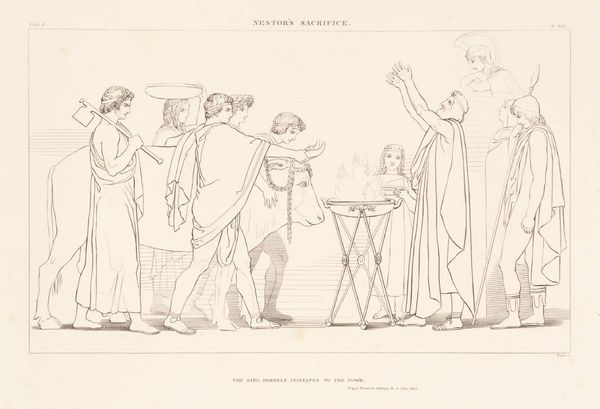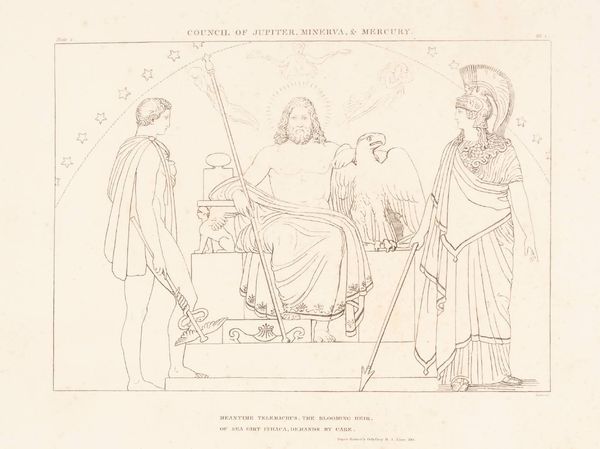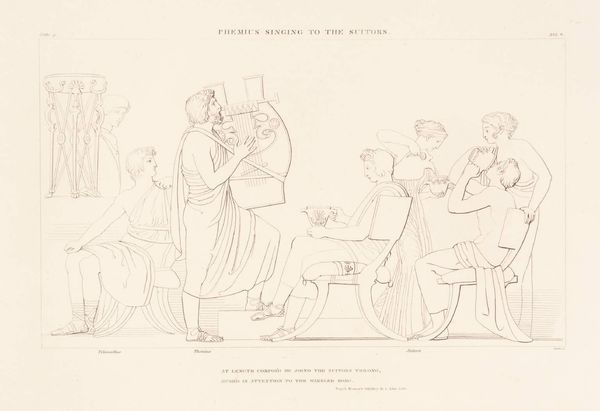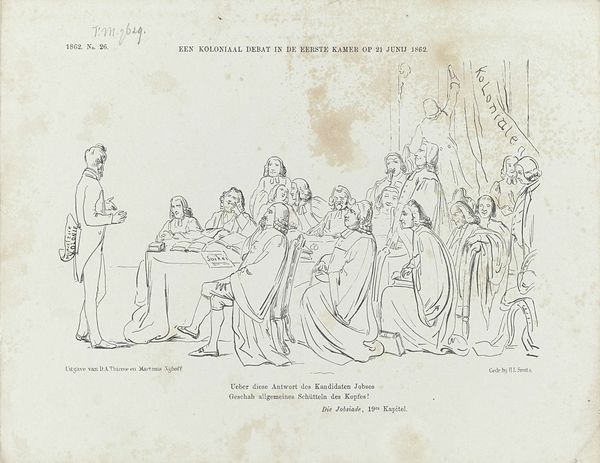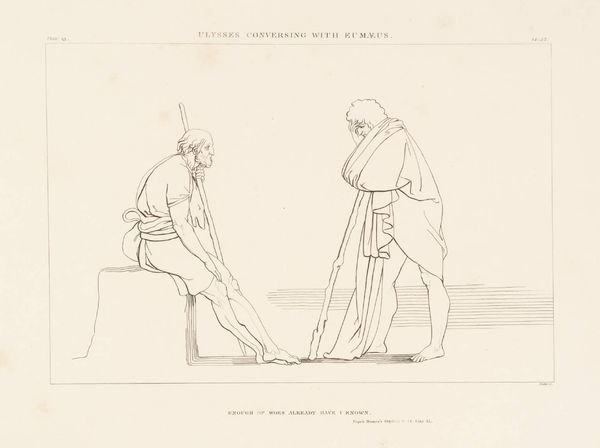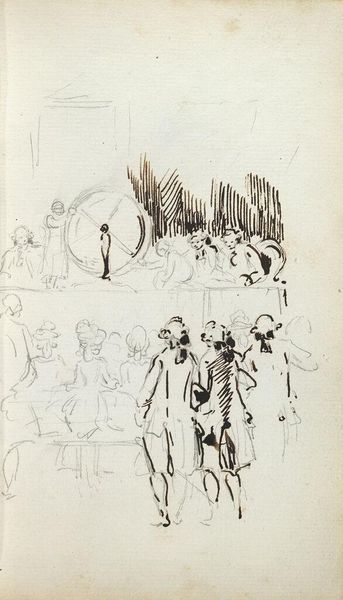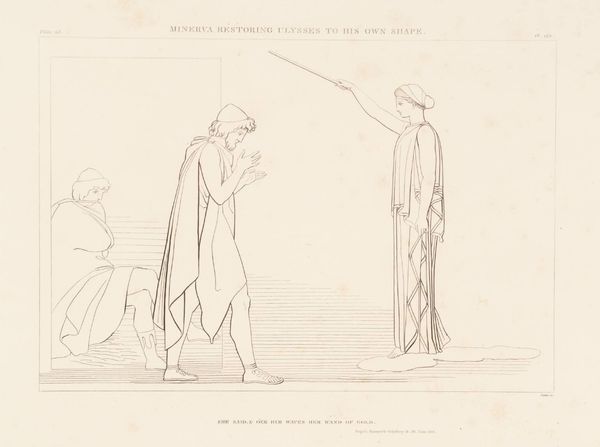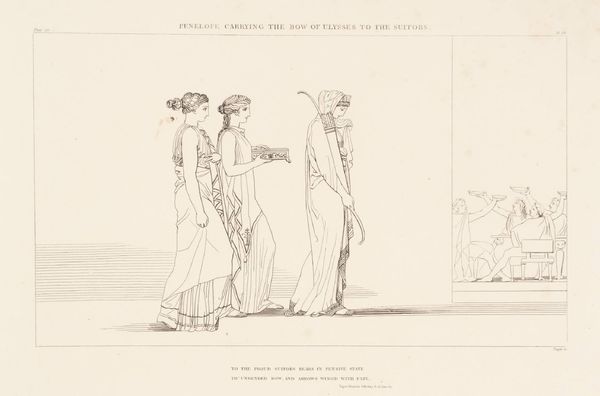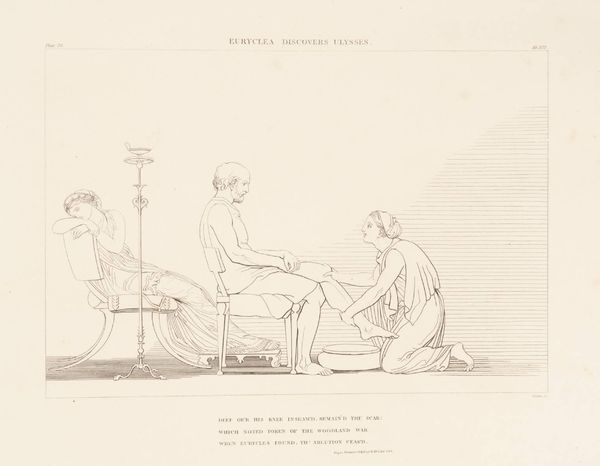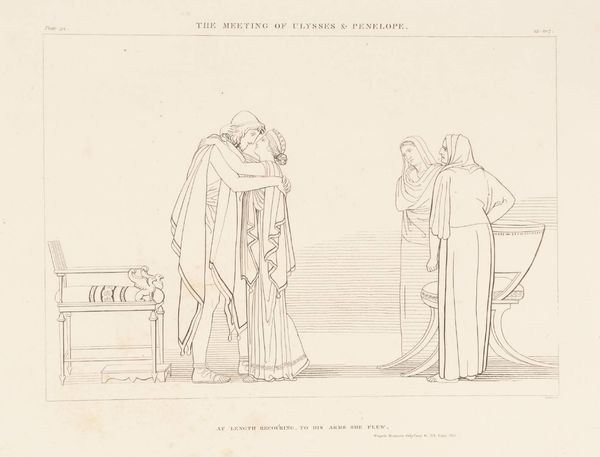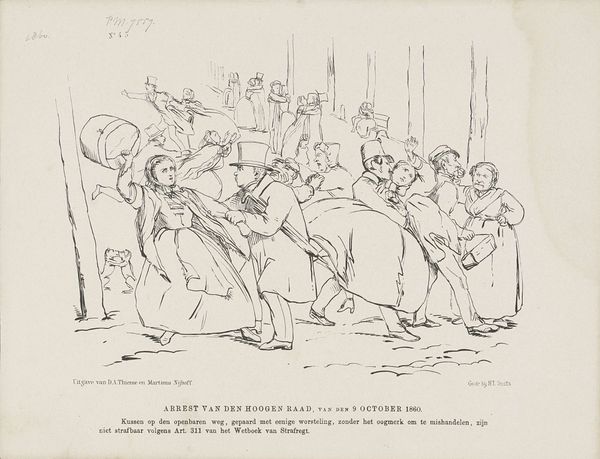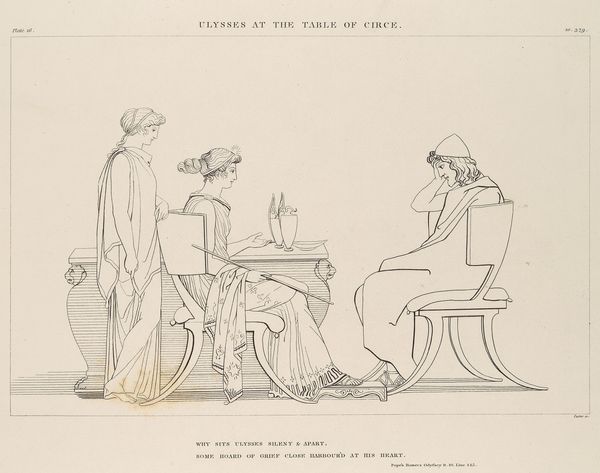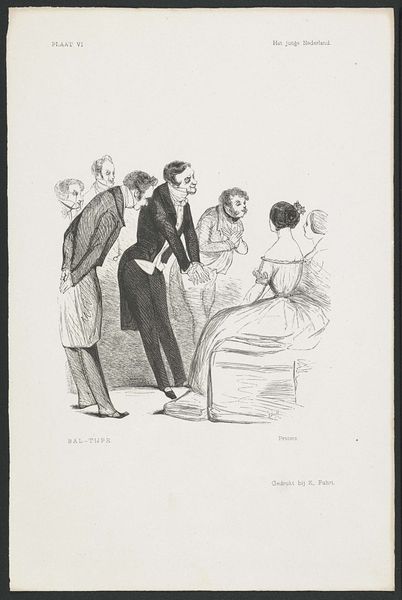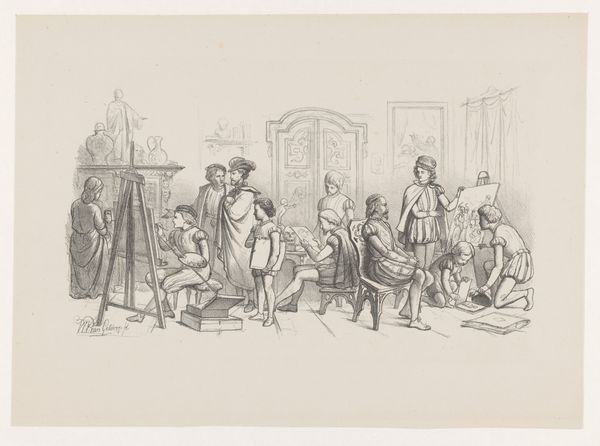
Dimensions: image: 168 x 303 mm
Copyright: CC-BY-NC-ND 4.0 DEED, Photo: Tate
Curator: John Flaxman's "Ulysses on the Hearth Presenting Himself to Alcinous and Arete," part of the Tate collection, showcases a pivotal moment in Homer’s Odyssey. Editor: Immediately, I'm struck by its stark simplicity—the linear forms, the muted palette. It feels almost like a blueprint for a grander vision. Curator: Flaxman's neoclassical style echoes the very values of the era—reason, order, and a return to classical ideals, particularly in the figure of Ulysses, a hero returning after facing oblivion. Editor: Absolutely. The composition, so precisely balanced, emphasizes the formality of the encounter. The gaze directs me to Ulysses. Curator: He is a potent symbol, isn’t he? Of homecoming, of claiming one's rightful place—the silent hearth as a space of identity. Editor: Precisely, and the reduction of detail is rather brilliant; it invites the viewer to project their own understanding onto these archetypal forms. Curator: True. It’s a narrative distilled to its purest, most resonant form, and it speaks volumes about cultural memory and the enduring power of myth. Editor: Indeed. I find this distillation quite evocative. It leaves room for contemplation on our shared histories.
